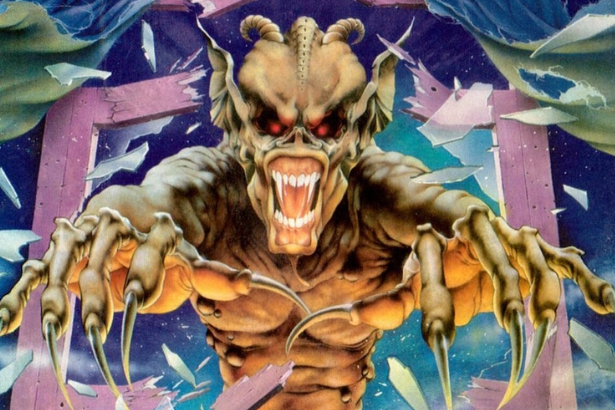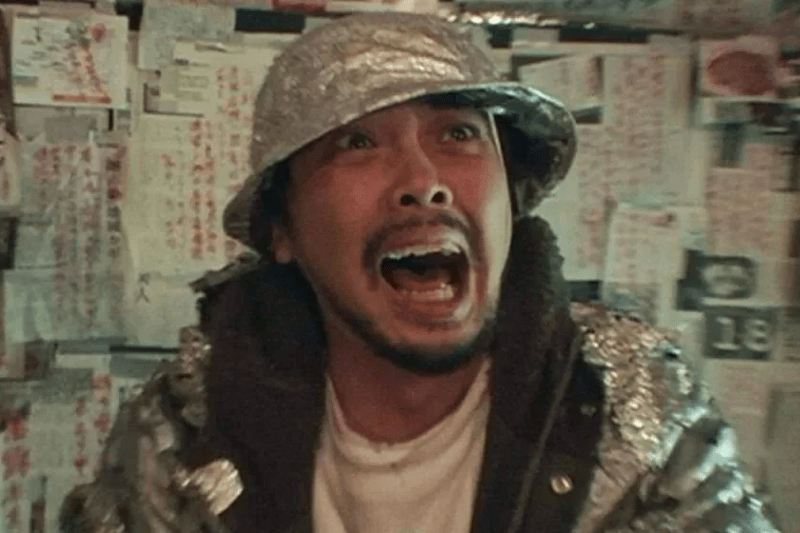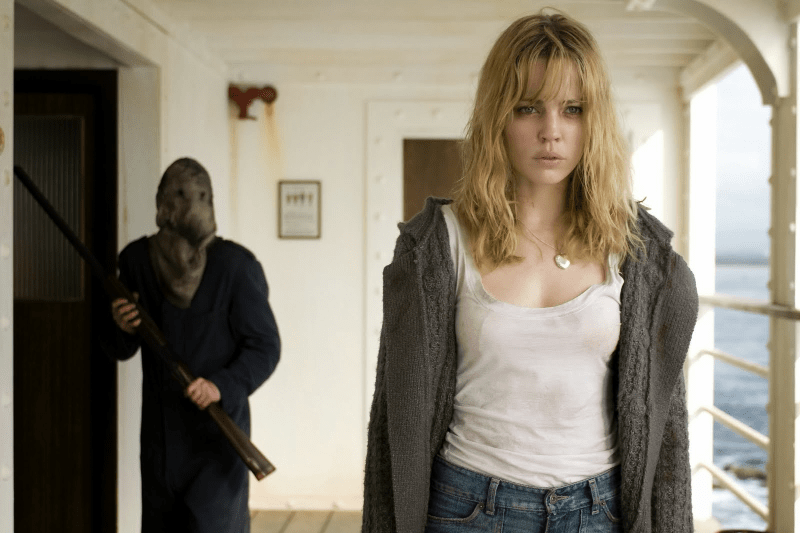On September 22, 1995, Seven was released onto unsuspecting audiences. The film went on to gross $100 million domestically and became something of a cultural phenomenon. The crime-horror genre it repopularized never disappeared, but the success of David Fincher’s film sparked a wave of imitators. You may remember Kiss the Girls, Fallen, The Bone Collector, and In Dreams as just some of the major studio copycats, but have you seen 1999’s Resurrection? While it showed theatrically in other countries, Resurrection went straight-to-DVD in the US. It sat on Blockbuster Video shelves alongside other ignored or forgotten titles of that era.
Among the few who have seen it, there is a tendency to dismiss Resurrection as a Seven rip-off. This fails to accurately convey its distinct attributes. While there are surface-level similarities between the two movies, Resurrection is hardly an uninspired retread of Fincher’s classic. Even Seven contains elements familiar to viewers of police procedurals and serial killer stalkers. Resurrection borrows from the familiar but adds enough ingredients of its own to become something different and noteworthy. It boasts a stellar supporting cast and is stylish, violent, and occasionally unsettling—and ends on a moment that needs to be seen to be believed.
Resurrection was something of a vanity project for Highlander star Christopher Lambert. In addition to playing the lead—Chicago homicide detective John Prudhomme—Lambert produced the movie and received credit for co-creating the story. He also surrounded himself with some familiar faces behind the camera. Highlander and Highlander II: The Quickening director Russell Mulcahy is at the helm; Lambert’s frequent collaborator Brad Mirman—who wrote Knight Moves and Gideon for the star—also notches a screenplay credit.
The filmmakers waste no time showcasing dead bodies. Prudhomme and his partner Andrew Hollinsworth (Seven and The Bone Collector’s Leland Orser) arrive on the scene of a homicide within the first four minutes. The victim’s arm has been removed and “He’s Coming” is written in blood on a window. Shortly after that two more bodies are found. One, also missing an arm, is buried in a botanical garden. The third crime scene is particularly gruesome and marks the movie’s first legitimately unsettling moment. A man with no head sits on a toilet in a dilapidated, dirty building. It is equally evocative and repulsive.
Here is where we learn Resurrection identifies as Easter horror, something we don’t see too often. Prudhomme and Hollinsworth determine that each victim is a 33-year-old male named after an apostle (Peter, Matthew, and James). Each victim has numerals on their body that are revealed to be bible verses. With the murders occurring a week apart and Easter three weeks away, Prudhomme announces that the killer is recreating the resurrection with stolen body parts and that their work will culminate on Easter. This means the police can expect three additional murders but have no way to stop them. The killer is smart and has left no trace evidence behind. Identifying a suspect seems impossible.
A standout sequence near the halfway point demonstrates the grisliness of the killer’s actions and the stylistic flourishes Mulcahy brings to the table. Prudhomme and Hollinsworth are able to identify the fourth victim while he is still alive. They arrive at his art studio to find the man with his leg cut off and near death. It is extremely graphic and bloody—according to Mulcachy, the scene needed cuts in order to secure an R rating. Prudhomme discovers that the killer is still present and a chase ensues. It culminates with the man’s death, Hollinsworth suffering a serious though nonfatal injury, and the villain escaping.
Such a sequence is highly and horrifically effective. The dark, sizable art studio is a bit creepy even before Prudhomme locates the victim, who is in enormous pain and bleeds to death. The killer is glimpsed lurking in the background before Prudhomme realizes and gives chase. They are wearing a pale mask that tightly grips their head. It has black holes that hide the eyes so that from certain angles all you can see are dark circles. There is a hole cut out for the mouth, meaning the killer’s lips protrude slightly from the mask itself, which is taut around the lips. It is an odd, unnerving sight. The killer eventually incapacitates Hollinsworth with a taser before taping his mouth shut and a gun to his hand. A police officer mistakes him for the killer and fires a shotgun blast into his leg. Hollinsworth survives but has to have his leg amputated—quite tense and very well-orchestrated.
Like much of Resurrection, the art studio scene is set in the rain as Mulcahy emphasizes gloominess throughout. It’s always dreary weather and even daytime scenes lack color. Mulcahy also employs a significant amount of camera manipulation in this sequence, including conscious shaky cam choices as well as funky angles, close-ups, and rapidly moving the camera towards and away from a character in quick succession. The shaky cam is overused at times, but overall Mulcahy’s direction is captivating and stylish. Many images, like the headless man on the toilet, are impossible to forget.
It helps that the gloominess and unsettling imagery are partially offset by humorous moments. In addition to Orser’s wisecracks, there is a medical examiner who deadpans lines like, “I have a pretty good idea what killed him,” upon seeing the man on the toilet. Prudhomme’s stiffness and ability to alienate everyone around him also plays for laughs—there’s an amusing moment near the end where, after a certain reveal, Prudhomme shouts, “what the fuck,” and you can’t help but nod in agreement. The film even gives us David Cronenberg for two scenes as a priest trying to restore Prudhomme’s faith.
Then, there is the ending. Resurrection has a doozy of a finale, one that elevates the film from good to great. Prudhomme determines that the killer, who is a man masquerading as an FBI agent assisting with the investigation, plans to complete his work by sacrificing a newborn on Easter. He deciphers which hospital the killer will strike and arrives there just after the baby has been kidnapped. Prudhomme, spotting the killer running off with the newborn, gives chase and winds up on the building’s roof.
This is where the fun really starts. It is, of course, pouring rain and late at night. Prudhomme slowly approaches the killer as he wanders toward the edge of the roof, fully aware of the fact that a newborn is in grave danger. The killer gives a token speech about his diabolical ways as the cop tries to reason with him. Suddenly the newborn is being held by its ankles, naked and shrieking, as the killer dangles the baby over the edge. He is about to release his grip when Prudhomme shoots him while almost simultaneously grabbing hold of the newborn just as they begin to fall. The editing and special effects work well together to keep it looking real, so the viewer stays fully involved in what is happening. In a film populated with sequences that punch above their weight class, this finale is truly impressive.
Resurrection is a must-see for any fan of the serial killer genre and one of the more overlooked films of its kind. The crimes are appropriately bloody and twisted, it is suitably moody and atmospheric, and there are a handful of standout moments genre fans will enjoy. In addition, the supporting cast is full of faces familiar to horror and sci-fi fans and it is fun to figure out what you recognize them from. This is an extremely entertaining and well-executed flick that easily holds its own among the more popular titles of its time period. Even the most seasoned viewer of serial killer fare will be left with an indelible image or two that proves plenty of wickedness exists outside theatrical screens.







